Interviewed and Written by Patrick Mc Gavin 5/09, Edited by Larry Lynch ’75
DONALD HOGAN ’45
The great American playwright Eugene O’Neill famously said about the Irish, they have no present or future. Their lives exist in a continuous, overlapping “past,” that remains suspended over their lives. Time is perhaps elusive, but memories, events, lives, hang in the balance. The past is everywhere. At his home in Crestwood, on a beautiful slate table, there lies a “memento,” a photograph of four young boys. The boys are lined next to each other, their young, avid bodies suggesting all manner of hope, playfulness and fun.
The boys were the Hogan brothers, four of the five children borne to Michael Hogan and his wife Kathleen. The young couple arrived separately in Chicago from their native Ireland sometime around 1920. Michael was born in 1896, Kathleen a year or two later. The exact manner they met in Chicago remains shrouded in mystery. “Most [Irish] people who came over here, one way or another, they all met,” says Don Hogan, the couple’s third-born son. Mr. Hogan remembers fondly turning up at a South Side bar with his younger brother Jim and telling the patrons they were first-generation Americans. “The people there were impressed,” he recalled.
Born in May 1927, Mr. Hogan witnessed the great and volatile political, cultural and social changes of the twentieth century. He is a proud graduate of Leo High, class of 1945; his stint at Leo was dominated by a family tragedy. Even so, he and the rest of his family persevered. His time at Leo actually played a critical part in saving him from grunt detail in the service. He entered Leo High School in the fall of 1941, just months before the Japanese attack on Pearl Harbor startled the country and pushed it to declaring war against the Axis powers of Germany and Japan.
 The Depression, the worst economic downturn in modern history, remained a powerful and vivid cornerstone of daily life. During the worst of Depression, from 1929-34, one out of every four work eligible Americans were unable to find sustaining work. The economy finally stabilized due to the massive government intervention of Franklin Roosevelt’s New Deal programs. “My recollection of that whole time is sort of passive, I would think,” Mr. Hogan said. “I was like anybody, 14-years-old, and you don’t really know what’s going on in the world.”
The Depression, the worst economic downturn in modern history, remained a powerful and vivid cornerstone of daily life. During the worst of Depression, from 1929-34, one out of every four work eligible Americans were unable to find sustaining work. The economy finally stabilized due to the massive government intervention of Franklin Roosevelt’s New Deal programs. “My recollection of that whole time is sort of passive, I would think,” Mr. Hogan said. “I was like anybody, 14-years-old, and you don’t really know what’s going on in the world.”
Family tragedy
Mr. Hogan had more pressing and immediate concerns directly in front of him. “We were going through some difficulty at home,” he said. “My ma was going through her second bout with cancer.” It was the first jolt of a life that had been until then relatively charmed, Mr. Hogan recalled. He had two brothers–Jack and Leo–in front of him, and two–Ed and Jimmy–behind him. Like a lot of Irish émigré families, the Hogans lived in the cultured south side part of Chicago that to an outsider was probably closer to Dublin. The family lived at 7638 S. Carpenter. Leo was Mr. Hogan’s high school, but St. Sabina dominated his life and existence. He attended grammar school there with a group of buddies. Sabina became a way of preserving Irish culture and traditions. “Pretty much everything we did was at Sabina, basketball, the dances.
“They started up [roller] skating shows at Sabina, and I was involved in going out and getting the skates. It started out everybody rented their own skates and then they started buying them, and skates became a very big item.
“You had two ways of looking at Sabina back in those days: you either loved it or you hated them. They had so much. Sabina was a great place to grow up, because the community center was so active. In a way, it was the people who lived in Sabina who if they weren’t part of the social circle, they felt shut out or excluded. We had it pretty nice, we had it great around there, there’s no question. The parents, everybody, they were at Sabina for something, in the church and the community center. It was great.”
By the end of the 1930s, unemployment was still at 11 or 12 percent. Finding work “was never a problem with my dad,” Mr. Hogan said. “I remember him saying at the time of the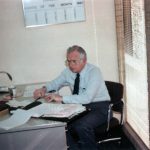 Depression, they didn’t get money from the city, but they got script that [the city] would honor later down the road. We didn’t have a lot, financially. We didn’t have anything, but at the other side of the coin, you didn’t know you were supposed to have anything. Everybody was in the same boat. Like I say, for most people, cars, television, there was none of that stuff back then. There were activities, whether it was your parents or your friends it was about socializing with each other and making your own time. That’s the way things were, and you didn’t know it would be any different.”
Depression, they didn’t get money from the city, but they got script that [the city] would honor later down the road. We didn’t have a lot, financially. We didn’t have anything, but at the other side of the coin, you didn’t know you were supposed to have anything. Everybody was in the same boat. Like I say, for most people, cars, television, there was none of that stuff back then. There were activities, whether it was your parents or your friends it was about socializing with each other and making your own time. That’s the way things were, and you didn’t know it would be any different.”
Sabina played a crucial role in Mr. Hogan’s choice of high schools. As a kid, Mr. Hogan was sufficiently earnest and forthright to earn a scholarship. “Sabina gave out two scholarships. I remember there was one given to Leo and one was given to [Mt.] Carmel. The other guy had the first preference and he went to Carmel. And then I went to Leo. So it’s possible that if he had selected Leo, I’d have gone to Carmel because money was tight back then and if you’re going to go for zero, you’re going for zero.” The academic scholarship paid his tuition his four years at Leo.
Leo had other advantages of convenience, location and history. Compared to Mount Carmel or St. Rita, Leo was an emerging school. Mr. Hogan’s generation marked the first wave that set the tone for the new program. Furthermore, he had the family connection. His oldest brother Jack entered Leo three years earlier and graduated in the class of 1942. His next oldest, appropriately named Leo, attended Quigley, the only brother who did not attend Leo. “I knew I was probably going to Leo because the guys I hung with went there, and you pretty much knew you were there.
“The idea of going to Carmel or Rita never really entered my mind. It just wasn’t there. You follow in step with everybody else. Leo wasn’t that far from our house. We walked to school every day, I did it with my friends. It was four or five blocks.” He settled in quickly, responding to the school’s regiment of discipline, toughness and order. Three months into his freshman year, the Japanese struck at Pearl Harbor. Mr. Hogan’s group, whether they wanted to admit or not, was suddenly the World War II class, the subsequent “greatest generation.” Mr. Hogan recalled clearly President Roosevelt’s radio address announcing the American entry into the war.
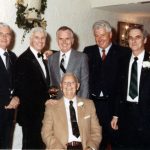 It was a harsh, difficult time. The once-dormant economy was revived by the increased industrialization and war mobilization. Suddenly, jobs were plentiful and well paying. As frightening as the war appeared to most, schoolboys and otherwise, Mr. Hogan’s family life had an even greater tragedy. His mother Kathleen lost her battle with cancer. She died in 1943, during his sophomore year. Attending Leo, Mr. Hogan said, was the next step of his life. Now, suddenly, he had greater and more urgent responsibilities.
It was a harsh, difficult time. The once-dormant economy was revived by the increased industrialization and war mobilization. Suddenly, jobs were plentiful and well paying. As frightening as the war appeared to most, schoolboys and otherwise, Mr. Hogan’s family life had an even greater tragedy. His mother Kathleen lost her battle with cancer. She died in 1943, during his sophomore year. Attending Leo, Mr. Hogan said, was the next step of his life. Now, suddenly, he had greater and more urgent responsibilities.
‘We Got Through’
Leo served one purpose for Mr. Hogan: to prepare him for the next stage. His father Michael Hogan was a policeman. “When he first came here he worked for a while on the [elevated train lines], for the fire department and then for the police department,” Mr. Hogan said. “Pretty much his last 30 years he worked at the Kensington police station at Roseland.
“I always thought he had a pretty good gig. He was in plainclothes the last part. He worked a lot of days, not around the clock, which was good.”
His mother’s death changed Mr. Hogan’s time immeasurably at Leo. Sabina remained the center of his social universe. He never played organized sports or wrote for the school newspaper at Leo. He worked a year in the cafeteria with a group of friends. It provided insightful views into the lives of his peers and other students. “I’m sure there were kids at Leo who got involved with more outside things, but because of what happened to my ma, that wasn’t really possible.
“I didn’t have a job when I was at Leo. My freshman year, my attitude was to go to school, get what I needed done and get home and help with what was needed to be done at the house. After she passed away, that was just continuous, get the heck home after school ended and take care of what needed to be done with my two younger brothers until my dad got home.
“It was tough, but it worked out all right. We got through.”
Military service
In 1943, Mr. Hogan’s brother Jack, one year removed from Leo, enlisted in the army and was dispatched to the European theater. The war that Mr. Hogan had a somewhat passive response to now hit home with a vengeance. The son of his parents’ friends was killed in action. Another Sabina neighborhood boy was killed. Time was suddenly cruel. A year sometimes meant the difference between seeing action, suffering injuries or missing out on the action.
“By that time, you had a stronger sense of what was going on out there,” Mr. Hogan said. “But I think everybody back then, you automatically felt that when your time came, age wise, you were going. It was automatic.” Mr. Hogan enlisted in the Navy in February of his senior year at Leo, 1945. Even though the Allies had seized the momentum and the war appeared to be nearing a conclusion, Mr. Hogan was prepared to do his part. Even so, the letters his brother Jack sent home of grunt life in the army, the mud, the discomfort, the grinding tours, convinced him the Navy was a preferred option.
Germany’s surrender in May 1945 ended the European war. The Pacific campaign against heavily fortified Japanese positions continued. “Back then when you enlisted in the Navy, you served for two years or the duration [of the war], which ever was the longer time period. I got called in May {1945]. I think there was still a lot of fear of the way things were in the Pacific. You figured an [invasion] of Japan was coming. The way things were going on the [Pacific] islands and the price that the marines paid, you thought invading Japan was going to be a long haul.
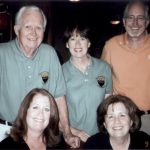 “Right or wrong, dropping that [atomic] bomb ended all of that. Whether it was the right thing to do or not, living in that time, you figured a lot of kids were going to be dead.”
“Right or wrong, dropping that [atomic] bomb ended all of that. Whether it was the right thing to do or not, living in that time, you figured a lot of kids were going to be dead.”
Mr. Hogan performed his basic training at Great Lakes and was dispatched to the West Coast. “I went out to California, where I was assigned to the battleship USS Wisconsin that was in Tokyo Bay for the Japanese surrender and then came back to the Pacific Coast, and that’s when I boarded it.
Good Duty
“There were about 21 guys that went from the Lakes that eventually went on the Wisconsin. Only two of us got good duty. The other 19 ended up in the deck division; the one thing you don’t want to do, in the Navy, especially in those days, was end up in the ‘deck division’:
“Because all those guys did was clean, chip paint and repaint morning, noon and night. You almost felt sorry for the guys. I was fortunate, my first week I was attached to the signal division. One of my first nights up there, I was in the superstructure, they were sending signals to another ship in the area. The guy was sending Morse code, it was incredible; the rest of the time, I got assigned to the gunnery division. They had plot forward and plot aft that controlled the shooting of the 16-inch guns. If you were under battle circumstances, plot forward was when you have range finders who’d be firing the guns on order;
“Finally I asked somebody aboard ship. How did I end up here and not put with those other guys, chipping paint. They said they had a copy of my time at Leo, that I had taken math, [trigonometry], and because of that, I got assigned to the signal group; even on my separation papers from Great Lakes, they had down on the bottom, college prep written on the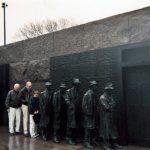 bottom. I think the idea I took those courses at Leo, it paid off for me.”
bottom. I think the idea I took those courses at Leo, it paid off for me.”
Professional career
Mr. Hogan received his Navy discharge in July 1946. He returned home to the south side, where his father continued to live at their house on Carpenter. “After the war I played [Catholic Youth Organization] basketball for Sabina as well as the House League. One year all five Hogan brothers played on the same team.”
His time in the Navy was the first time in his life Mr. Hogan experienced life outside the south side. Until the time he entered the Navy, he rarely ventured more than a mile outside of his neighborhood. Before the passing of his mother, the Hogan family occasionally spent vacations in Michigan. Largely, their lives were anchored to the south side. (One of the few “expeditions,” involved Mr. Hogan, a renegade Cubs fan, taking his two younger brothers to Wrigley Field for Sunday afternoon double-headers. “We’d stay until the bitter end,” he said.)
Mr. Hogan attended junior college at St. Bede in LaSalle-Peru and played on the basketball team. He spent two years at Loyola University. “Kids today think about college in grammar school,” Mr. Hogan said. “I never thought about college. You didn’t think about college the way kids do, today. Back then, you’re more interested in playing basketball.” He never finished his degree. Mr. Hogan was now a man of the world, figuratively. He had greater ambitions. He was interesting in work.
 “I got a call from a friend of mine who asked me if I wanted to work the census,” he said. “We worked it in 1950. You made money for every name you wrote in the building. We wrote like crazy.” His first significant job was working as a route salesman for Coke. “I loved that job. I had a route that ran through Morgan Park and Beverly. I liked being outside, being with people. One thing I didn’t like, we used to pull out of the garage at 73rd and State, I’d see guys that were 40 years old and they looked like they were 140 years old. You’re always fighting the weather: it was either too hot or too cold.
“I got a call from a friend of mine who asked me if I wanted to work the census,” he said. “We worked it in 1950. You made money for every name you wrote in the building. We wrote like crazy.” His first significant job was working as a route salesman for Coke. “I loved that job. I had a route that ran through Morgan Park and Beverly. I liked being outside, being with people. One thing I didn’t like, we used to pull out of the garage at 73rd and State, I’d see guys that were 40 years old and they looked like they were 140 years old. You’re always fighting the weather: it was either too hot or too cold.
“The trucks that we used for Coke, you see the beverage trucks today where everything is on skids. Back in those days, they didn’t have those; all the beverages were on metal slabs, all exposed to the weather. In the winter, it’s freezing sitting in the cold.”
Irish girl
With regard to his own parents, Mr. Hogan said time and fate almost inevitably brought the Irish together. So the pattern repeated with Rita Kelly, the beautiful and fiery Irish girl he met at a dance. The couple married in 1953.
The harsh conditions and career limitations of manual labor taught Mr. Hogan a valuable lesson. Get indoors. A friend of his told him about the insurance business. Mr. Hogan made inquiries and started with Bankers Life in 1952. “I’ve had a great experience with it over the years. I was an agent, ten years in management and the rest as an agent, life and health. Today, the product line of the company is mainly life and the senior market. The way our operation was and is still, you’d go to people’s homes. It was good. I worked in numerous offices. I spent three and a half years in Gary and Merrillville, South Bend. Offices would relocate based on population shifts. Most of them were on the South Side or the south suburbs.”
More than six decades after he started at Bankers Life, Mr. Hogan remains in the business. He is, technically semi-retired, but he services calls, meeting the growing demand of the senior market.
“My wife and I lived for a while on the East side, at 79th and Rhodes. That was the greatest place we ever lived in because we lived in an apartment that was above a group of stores: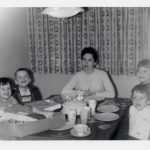 below us downstairs was a pizza joint, a liquor store, a meat market was across the street, you walk down the alley to St. Dorothy’s Church, down the street was a movie theater, the Rhodes Theater and another half block down was a great Italian restaurant. The whole thing was right there for you.”
below us downstairs was a pizza joint, a liquor store, a meat market was across the street, you walk down the alley to St. Dorothy’s Church, down the street was a movie theater, the Rhodes Theater and another half block down was a great Italian restaurant. The whole thing was right there for you.”
As the size of their family grew, three daughters and son, the Hogans moved to accommodate the growing demands. They lived in Palos Heights for 36 years. Mrs. Hogan passed away seven years ago. (Mr. Hogan has 15 grandchildren.)
Life lessons
Living in Crestwood, Mr. Hogan works about 15 to 20 hours a week servicing his elderly clients. “Those people took care of me all those years, so I should take care of them. They’re very thoughtful of me. Most of the people I’m dealing with now are older than I am. You’re growing up with all these people. A lot of them are 85, 90,” he said.
Leo retains a powerful hold on Mr. Hogan. He has been involved in the school’s alumni program since 1958. He served a one-year term as the alumni president in 1962. He has missed only alumni banquet since 1955. Mr. Hogan was elected to the Leo Hall of Frame in 2003 and was named alumni Man of the Year in 2006.
He meets twice a month with past classmates and new friends at a restaurant on 95th Street. They talk, reminisce and produce betting pools for the Masters or the college basketball Final Four. It provides a perfect opportunity to reflect on a time and consider the ways Leo shaped him as a man.
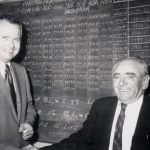 “I think there’s no question we were fortunate to go to Leo. I used to say it had to be good for us because none of us ever ended up in jail. The discipline was very strict, physical sometimes, but in the long run, when you look at Leo, not just our class but also a lot of the classes, people have gone to Leo and come out and done a lot of important things.
“I think there’s no question we were fortunate to go to Leo. I used to say it had to be good for us because none of us ever ended up in jail. The discipline was very strict, physical sometimes, but in the long run, when you look at Leo, not just our class but also a lot of the classes, people have gone to Leo and come out and done a lot of important things.
“I think Leo laid in us some sort of a foundation that has certainly benefited us down the road, at the time we probably didn’t even realize it. Through the alumni group, I’ve met guys from all classes. It’s really been a wonderful experience.
“Leo’s done something for us.”
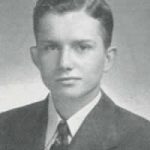
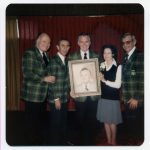
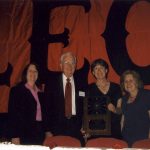
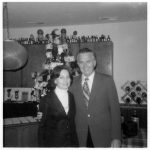
I really enjoyed reading this article! I must admit that I was drawn to it initally because I figure that he must have known my maternal grandfather, James Hannon, whom graduated at Leo in 1945 as well. Either way, I am very happy to have read about a person who has lived a really great and accomplishing life. The world needs more people like Mr. Hogan, that’s for sure.